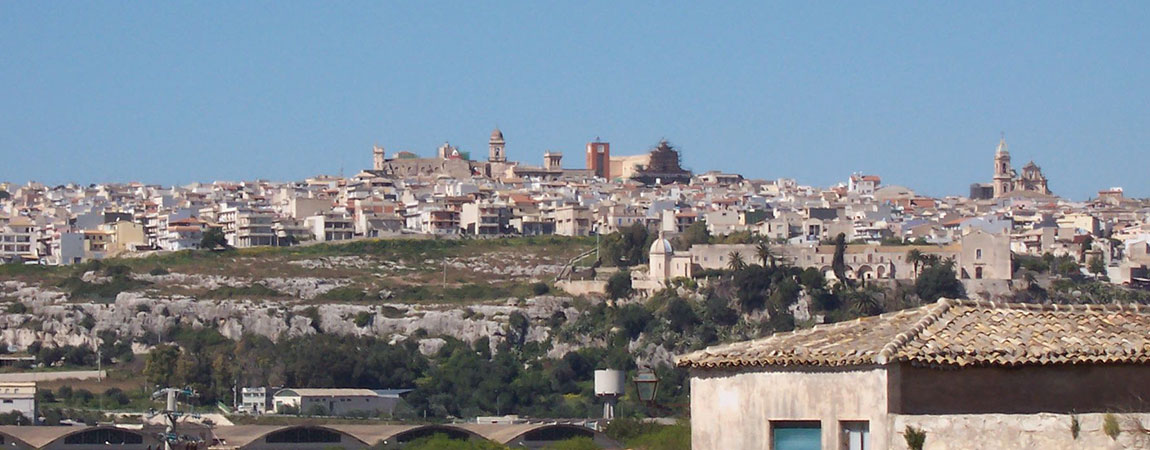
In the province of Ragusa stands one of the prettiest villages in Sicily, although it is generally off the most common tourist routes: it is Ispica, a town located at 170 m. high at the top of Colle della Calandra, in an area rich from a naturalistic point of view, given the presence of the nature reserves of Maccone Bianco, Pantani and Isola dei Porri, a rock much frequented by diving enthusiasts.
Not far from Ispica is the unmissable Archaeological Park of the Force, where it is possible to see the remains of tombs, rock caves and vestiges of ancient churches: the park also includes the Palazzo Marchesale, complete with stables dug into the living rock and the "Museo Antiquarium", with finds also dating back to the Bronze Age .
Ispica: what to see
Legend has it that it landed on the nearby coast of Ispica, only 7 km away from the centre Ulysses in his very long pilgrimage away from Ithaca. From a historical point of view, Ispica was dominated by the Greeks, the Romans, the Normans, the Swabians and the Angevins, even if the Statellos will leave their mark, whose emblem is also present in the coat of arms of the town and whose dominion is lasted 4 centuries. Ispica was rebuilt after the earthquake that hit the Val di Noto in 1693, assuming a magnificent Baroque appearance that makes it a truly unmissable destination.
The historic center of Ispica is shaped in white limestone and its beating heart is the Piazza Princess Elena and Queen Margherita, where the Monuments in honor of the fallen and the Resistance are located. Not far away stands the Mother Church dedicated to San Bartolomeo, with its beautiful facade that presents a mix of neo-baroque and neoclassical styles: inside there are works including the sculptures of Aaron and Moses.
The main place of worship in Ispica is the Basilica of Santa Maria Maggiore, built in Baroque style by Vincenzo Sinatra: going beyond the imposing nineteenth-century facade, you find yourself in an environment full of treasures, among the frescoes by Sozzi and Gianforma and the touching simulacrum of Christ at the Column. The drama of the scene, tragic and very realistic, is striking in this sculpture: this simulacrum is the protagonist of the procession that wanders through the streets of Ispica every year on Holy Thursday. In this regard, Holy Week is one of the best times to visit Ispica, which comes to life amidst flag-wavers, music, illuminations and historical processions. Returning to the Basilica of Santa Maria Maggiore, its most iconic part is the Loggia del Sinatra, built between the '600 and '700 in Baroque style: it is a very scenographic place, also chosen as a set for some scenes of the TV series "Il commissario Montalbano".
From the center of Ispica to its splendid coast
Walking through Ispica you come across many places of worship, from Church of Carmine, of which you can appreciate the bas-reliefs on the facade and the ancient pre-Baroque pulpit in wood, but also the Church of Santissima Annunziata. Inside the latter you can appreciate numerous works of art such as a silver reliquary, eighteenth-century paintings (depicting S. Maria dell'Itria, the Adoration of the Magi and the Annunciation) and above all an eighteenth-century sculpture by Guarino from Noto, depicting Jesus Christ with the cross.
La Church of Santa Maria del Gesù instead, Ispica dominates from above, being positioned on a rock from which you can see the sea that washes the nearby coast: the church still shows the signs of the earthquake of the 600s, but still preserves the beautiful polychrome marbles inside.
After visiting the center of Ispica, including its noble buildings such as the Bruno Palazzo Belmonte (liberty building which, with its corner towers, is very reminiscent of a small twentieth-century fortress), you can reach the coast and enjoy the beaches of Ispica, starting from S. Maria del Focallo beach: on this beach of fine sand, with shallow waters and thick vegetation behind, the allies landed during the Second World War and, long before, the First Punic War was fought.
Wilder is there Marina di Marza, with many bays created by the breakwaters, while the Punta Cirica beach it is among the most paradisiacal of this stretch of coast, with the stacks that rise from the blue sea.
Then there is the Porto Ulisse beach where, according to legend, the Homeric hero landed.
Reaching Ispica you will be able to dive into ancient history and legend, among monumental churches, cinematographic locations and dream beaches.
© Image by Cypher84 at Italian Wikipedia, Public domain, via Wikimedia Commons









